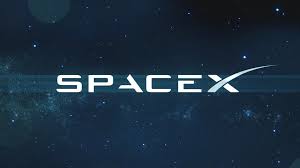Elon Musk’s SpaceX has been in recent headlines with a recent launch of a spy satellite. In fact, SpaceX is better at well managed and scripted messaging than it is at actually launching cargo into space in a timely and successful fashion. Always the public relations maestro, Musk announced that he plans to reuse every major component of the rocket by 2018. One of the themes SpaceX has carefully crafted is that it represents the future of “free-market” space flight.
The problem with this public relations hype is that it bears little resemblance to reality. Whether it is SpaceX or Musk’s electric car company, Tesla, the business model is based on lining up billions in taxpayer-provided subsidies and obtaining exclusive regulatory benefits and exceptions. Then, they engage in slick marketing to convince everyone how free-market and innovative they are.
Tesla survives on the back of hefty subsidies paid for by hard-working Americans just barely getting by so that a select few can drive flashy, expensive electric sports cars. These subsidies were originally scheduled to expire later this year, and Tesla is lobbying hard to make sure that taxpayers continue to pay $7,500 per car or more to fund their business model. Tesla even tried to force taxpayers to pay for charging stations that would primarily benefit their business. That is not what Musk’s high priced image managers will tell you, but it’s the truth.
SpaceX is even worse — its business model isn’t to invest its money developing competing space products that meet the same safety and reliability standards as the rest of the industry. Instead, its business model is to get billions in taxpayer money and push, bend, and demand regulatory special favors. Then, it produces a rocket that is more known for failed launches, long delays, and consistently missed deadlines. Again, slick PR makes up for those deficiencies.
SpaceX provides a limited space lift capability with a spotty record at a “bargain” price — but that comes with significant downsides and costs. SpaceX has lost two payloads worth hundreds of millions of dollars — some of which are taxpayer dollars — in just the past two years. The reason is poor design and a corporate culture of cutting corners and demanding that government accept the results. To place that failure record in context, United Launch Alliance, a traditional American space launch venture and SpaceX’s main competitor, has never lost a payload in 118 launches since the joint venture was founded in 2006. To make matters worse, SpaceX’s design failures and launch setbacks have created a backlog of missions that are nearly 36 months late. In 2016, only two of its launches were on time. Were the free market actually at work here, buyers of space-lift capability would be abandoning SpaceX in droves.
One of the reasons the Space Shuttle was abandoned was the expense of operating it. But SpaceX is more expensive than Space Shuttle and doesn’t come close to meeting its performance records. For SpaceX to match even one shuttle flight to the International Space Station, it would have to launch more than eight rockets. Yet, SpaceX’s average launch rate is less than four launches per year since they began flying their current Falcon 9 in 2010. Thus, it could take SpaceX more than two years to deliver as much cargo as a single shuttle flight.
The Space Shuttle could always fly at least three missions a year at a cost of $2.5 billion a year. To equal that capability, SpaceX would need to launch 25 flights a year — a current impossibility. But even if we ignore that unpleasant fact and simply take current costs per flight, it would cost more than twice as much for SpaceX to match the Space Shuttle’s lift capability. Keep in mind that the Space Shuttle was developed in the 1970s.
So SpaceX isn’t the forward-looking, high-tech, free-market space launch company that Mr. Musk’s careful image managers would have you believe. To the extent they have achieved success, it has been more on the backs of their lobbyists and image managers than on their scientists. Make no mistake, the American taxpayer is funding and enabling their business model.
With the new administration promising to bring a more business-oriented approach to government, let’s hope the cronyism business model employed by SpaceX is left on the ash heap of history. We need a rigorous competition to reignite our space program. But the power of the federal government and the money of the American taxpayer should not be putting its heavy hand on the scales of justice to tilt the competition. Rather than favoring those whose high-priced lobbyists specialize in gaming the system and whose expensive image managers present a fake facade of market-driven innovation, let’s focus on reliable, cost-effective, and truly innovative space technology.
